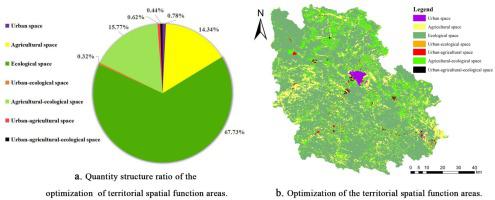当前位置:
X-MOL 学术
›
Land Use Policy
›
论文详情
Our official English website, www.x-mol.net, welcomes your
feedback! (Note: you will need to create a separate account there.)
Optimize and control territorial spatial functional areas to improve the ecological stability and total environment in karst areas of Southwest China
Land Use Policy ( IF 6.0 ) Pub Date : 2021-01-01 , DOI: 10.1016/j.landusepol.2020.104940 Sinan Li , Xiaoqing Zhao , Junwei Pu , Peipei Miao , Qian Wang , Kun Tan
Land Use Policy ( IF 6.0 ) Pub Date : 2021-01-01 , DOI: 10.1016/j.landusepol.2020.104940 Sinan Li , Xiaoqing Zhao , Junwei Pu , Peipei Miao , Qian Wang , Kun Tan

|
Abstract Optimizing and controlling territorial space have become national strategic issues for China. However, urban-agricultural-ecological functions have serious conflicts in karst areas, causing differences in regional development and leading to severe problems related to the ecological environment and poverty. In this study, based on evaluations of urban-agricultural-ecological suitability and resource and environment carrying capacity, we explored an optimization method for territorial spatial functional areas and amendment rules for unsuitable areas in karst areas, identified different territorial spatial function areas, and proposed territorial spatial control approaches taking the functional area control and rock desertification space control as cores. On the one hand, the results showed that the optimization of the territorial space was divided into three single functional areas (i.e., urban space, agricultural space, and ecological space) and four multifunctional areas (i.e., urban-agricultural space, urban-ecological space, agricultural-ecological space, and urban-agricultural-ecological space). Among those different functional areas, the largest was ecological space, which was primarily distributed in the northwest, southwest, and northeast with good ecological environments and the south and southeast with severe rocky desertification. The second was agricultural-ecological space, which was primarily distributed in the north with better ecology and the south and southeast with severe rocky desertification. This region was the most important multifunctional area of the karst areas. The smallest type was urban-ecological space, which was primarily distributed in the central and northeastern regions with higher ecological and residential values. On the other hand, in terms of territorial spatial control, the region formed control patterns of functional areas of the “trinity”, which centered on classified protection, comprehensive improvement, and cluster development. Additionally, from the three aspects of control of deteriorating rocky desertification area, control of severe rocky desertification area, and control of corresponding policies, we explored new approaches and methods for the development and protection of rocky desertification space. The results of this research provide references for territorial spatial planning and management in karst areas.
更新日期:2021-01-01











































 京公网安备 11010802027423号
京公网安备 11010802027423号